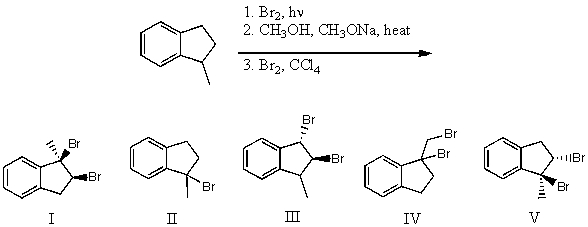What is the total number of trichloropropanes which can be produced by free radical chlorination of propane? Include all stereoisomers.
A) 4
B) 5
C) 6
D) 7
E) 8
G) A) and D)
Correct Answer

verified
Correct Answer
verified
What is the product for the following three-step reaction sequence? 
A) I
B) II
C) III
D) IV
E) V
G) None of the above
Correct Answer

verified
Correct Answer
verified